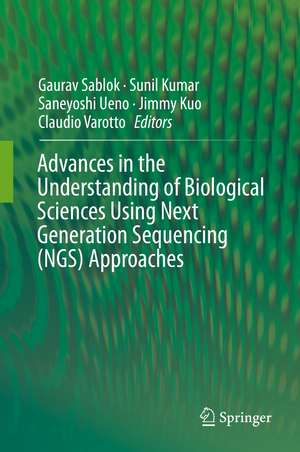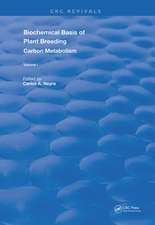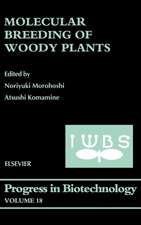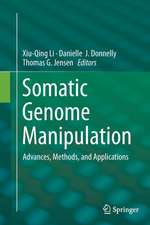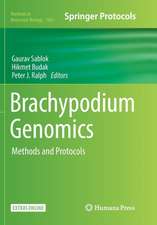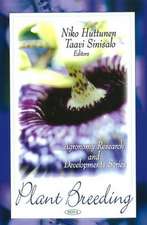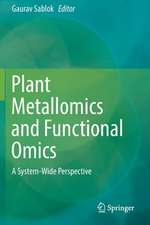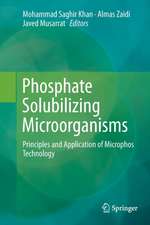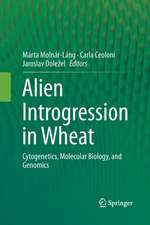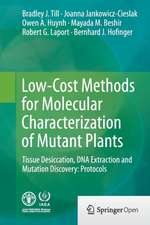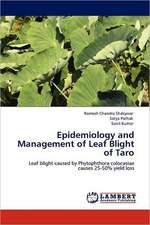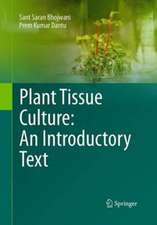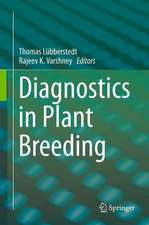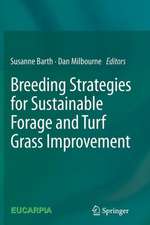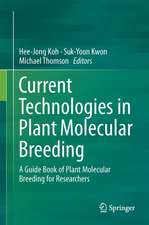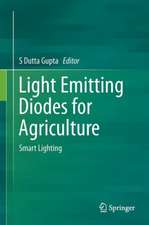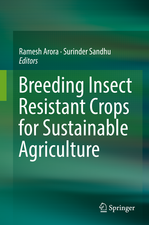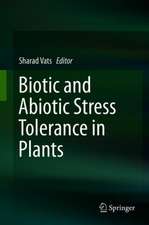Advances in the Understanding of Biological Sciences Using Next Generation Sequencing (NGS) Approaches
Editat de Gaurav Sablok, Sunil Kumar, Saneyoshi Ueno, Jimmy Kuo, Claudio Varottoen Limba Engleză Hardback – 24 iul 2015
Preț: 574.62 lei
Preț vechi: 718.27 lei
-20% Nou
Puncte Express: 862
Preț estimativ în valută:
109.95€ • 114.80$ • 91.00£
109.95€ • 114.80$ • 91.00£
Carte tipărită la comandă
Livrare economică 31 martie-07 aprilie
Preluare comenzi: 021 569.72.76
Specificații
ISBN-13: 9783319171562
ISBN-10: 3319171569
Pagini: 331
Ilustrații: XII, 241 p. 40 illus., 31 illus. in color.
Dimensiuni: 155 x 235 x 17 mm
Greutate: 0.64 kg
Ediția:1st ed. 2015
Editura: Springer International Publishing
Colecția Springer
Locul publicării:Cham, Switzerland
ISBN-10: 3319171569
Pagini: 331
Ilustrații: XII, 241 p. 40 illus., 31 illus. in color.
Dimensiuni: 155 x 235 x 17 mm
Greutate: 0.64 kg
Ediția:1st ed. 2015
Editura: Springer International Publishing
Colecția Springer
Locul publicării:Cham, Switzerland
Public țintă
ResearchCuprins
Expression analysis and genome annotations with RNA sequencing.- The application of Next Generation Sequencing techniques to Plant Epigenomics.- Whole genome sequencing to identify genes and QTL in rice.- Variant calling using NGS data in European aspen (Populus tremula).- Leafy Spurge Genomics: A Model Perennial Weed To Investigate Development, Stress Responses, And Invasiveness.- Utilization of NGS and proteomic-based approaches to gain insights on cellular responses to singlet oxygen and improve energy yields for bacterial stress adaptation.- Experimental evolution and next generation sequencing illuminate the evolutionary trajectories of microbes.- Plant carbohydrate active enzyme (CAZyme) repertoires: a comparative Study.- Metagenomics of Plant- Microbe Interactions.- Genes and trans-factors underlying embryogenic transition in plant soma-cells.- Bioinformatics tools to analyze the proteome and genome data.- High through-put transcriptome analysis of plant stress responses.- CNV and structural variation in plants: prospects of NGS Approaches.
Notă biografică
Guarav Sablok, PhD
Research Fellow, Plant Functional Biology and Climate Change Cluster (C3)
University of Technology, Sydney
PO Box 123
Broadway NSW 2007 Australia
T:: 0039-3270484-732
Email: sablokg@gmail.com
Sunil Kumar, M.Sc ,IPR, MCA, Ph.D
Senior Scientist, Department of Bioinformatics
Institute of Life Sciences
Nalco Square, C S Pur
Bhubaneswar, Odisha 275103, India
T: 91-6742301500
F: 91-6742300728
E-mail: skybiotech@gmail.com
Jimmy Kuo, Ph.D
Associate Researcher, National Museum of Marine Biology and Aquarium
Graduate Institute of Marine Biotechnology, National Dong Haw University
2 Houwan Road, Checheng
Pingtung 944, Taiwan
Tel: 886-8-8825001 ext. 1358
Fax: 886-8-8825087
E-mail: jimmy@nmmba.gov.tw
Saneyoshi Ueno, Ph.D
Department of Forest Genetics
1 Matsunosato, Tsukuba
Ibaraki 3058687, Japan
T: +81-29-8733211
F: +81-29-8743720
Email: saueno@ffpri.affrc.go.jp
Claudio Varotto, Msc, Ph.D
Department of Biodiversity and Molecular Ecology, Research and Innovation Center
Fondazione Edmund Mach, Research and Innovation Center
Via E. Mach 1, 38010 San Michele all’Adige (TN), Italy
T: +39 0461 615 108
F: +390461650956
Email: claudio.varotto@fmach.it
Research Fellow, Plant Functional Biology and Climate Change Cluster (C3)
University of Technology, Sydney
PO Box 123
Broadway NSW 2007 Australia
T:: 0039-3270484-732
Email: sablokg@gmail.com
Sunil Kumar, M.Sc ,IPR, MCA, Ph.D
Senior Scientist, Department of Bioinformatics
Institute of Life Sciences
Nalco Square, C S Pur
Bhubaneswar, Odisha 275103, India
T: 91-6742301500
F: 91-6742300728
E-mail: skybiotech@gmail.com
Jimmy Kuo, Ph.D
Associate Researcher, National Museum of Marine Biology and Aquarium
Graduate Institute of Marine Biotechnology, National Dong Haw University
2 Houwan Road, Checheng
Pingtung 944, Taiwan
Tel: 886-8-8825001 ext. 1358
Fax: 886-8-8825087
E-mail: jimmy@nmmba.gov.tw
Saneyoshi Ueno, Ph.D
Department of Forest Genetics
1 Matsunosato, Tsukuba
Ibaraki 3058687, Japan
T: +81-29-8733211
F: +81-29-8743720
Email: saueno@ffpri.affrc.go.jp
Claudio Varotto, Msc, Ph.D
Department of Biodiversity and Molecular Ecology, Research and Innovation Center
Fondazione Edmund Mach, Research and Innovation Center
Via E. Mach 1, 38010 San Michele all’Adige (TN), Italy
T: +39 0461 615 108
F: +390461650956
Email: claudio.varotto@fmach.it
Textul de pe ultima copertă
This work is a compiled catalogue of such findings, where several NGS technologies ranging from the genomics, transcriptomics, metagenomics, single cell genomics, QTL, patho-genomics and patho-transcriptomics have been applied to delineate the mystery of the associated mutations, biological pathway transitions, transcriptional fluxes and patterns of host associated or adaptations to certain climatic conditions. The aims and scope of this book focuses more on the biological underpinning to initiate the cross-talks across the traits acquired or lost during the course of evolution. The structured framework of the present volume provides the applicative point of view of the NGS technologies and demonstrates the conceptual way of linking the experimentation to the NGS technologies, to aid in researchers to place their biological hypothesis in a larger context.
Caracteristici
Focuses on the biological underpinning to initiate the cross-talks across the traits acquired or lost during the course of evolution Provides the applicative point of view of NGS technologies and demonstrates the conceptual way of linking the experimentation to the NGS technologies, to aid in researchers to place their biological hypothesis in a larger context Provides a global view of the recent advances in the biological sciences and the adaption of the pathogen to the host plants revealed using NGS
